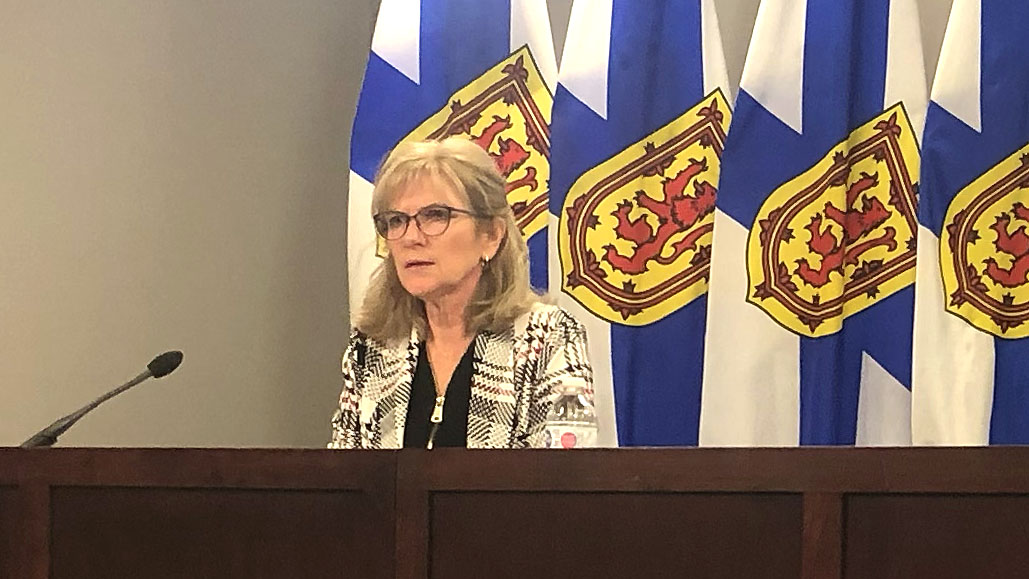Audit finds provincial deficit of $342 million, first in 5 years
Government revenues 'significantly impacted' by COVID-19, says auditor general

caption
Auditor general Kim Adair speaks to journalists at a press conference on Tuesday.Nova Scotia is facing its first deficit in five years as a result of the province’s increased COVID-19 and capital spending, according to a report by the province’s auditor general.
The report released Tuesday by auditor general Kim Adair found that the province increased its borrowing by $1.1 billion to cover spending as it battled the COVID-19 pandemic.
“The first year of the pandemic has had a significant financial impact on the province,” Adair said at a press conference on Tuesday.
Revenue from provincial sources fell $505 million from what was originally budgeted.
Major tax revenues, including personal income, corporate income and harmonized sales tax, made up 41 per cent of the province’s revenues. The report found that tax revenues “were significantly impacted by COVID-19,” with all tax revenue falling compared to budget projections.
The province’s net debt increased by $1.2 billion to $16.4 billion in 2020-21.
Its net debt-to-GDP ratio was 3.3 percentage points higher compared to the year before. Before 2020, it was steadily decreasing.
“The progress made over the past few years was wiped out,” Adair wrote in the report.
Despite budgeting for a $55 million surplus, the province’s annual operating deficit amounted to $342 million — its first deficit in five years.
The province spent $698 million on COVID-19 relief spending in 2020-21. That’s $578 million more than the $120 million the province spent in 2019-20.
The Department of Health spent the most in COVID-19 mitigation, with $392 million in pandemic-related costs in 2020-21. Part of that cost included income stabilization, virtual care fees for doctors and programs to support health care workers.
Other major COVID-19 expenses from government departments included $39.7 million for the Department of Education and Early Childhood Development’s extra costs for the safe reopening of schools.
Adair said the government’s liabilities for contaminated environmental sites such as abandoned mines “essentially doubled” over the past five years to $413 million.
A significant portion of the cost includes the cleanup project at Boat Harbour, which served as a treatment site for a pulp mill in Pictou County.
Adair said that since there are still site assessments to be done, the full cost of environmental liabilities is unknown.
“And that’s essentially why we’re encouraging (the provincial government) to continue to do the work,” she said.
The report also included a followup to the province’s response to cybersecurity risks. It found that the province has not finalized cybersecurity regulations and there was no government-wide cybersecurity training program for IT users across departments.
In her report Adair noted that the province has yet to release a long-term economic recovery plan. Other provinces, including British Columbia and Alberta, have released their plans to help businesses and individuals recover from the pandemic.
“It’s reasonable for Nova Scotians to ask their province about its long-term strategy for creating jobs and increasing investment in the province,” Adair said.
“Some concentrated thought needs to go to that because there has been such a significant impact in the past year. The path forward needs to be laid out.”


G
G Crocker